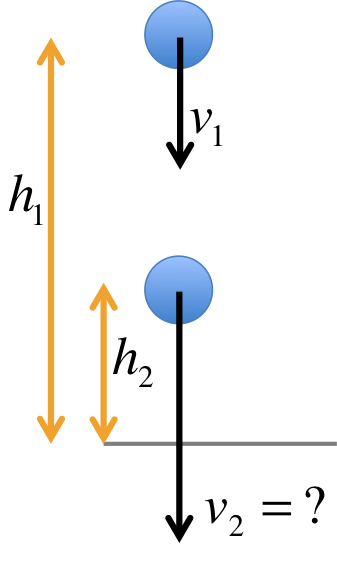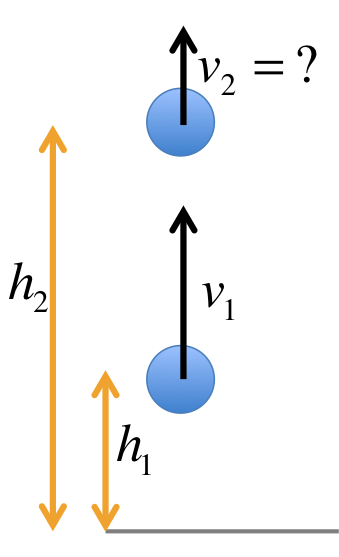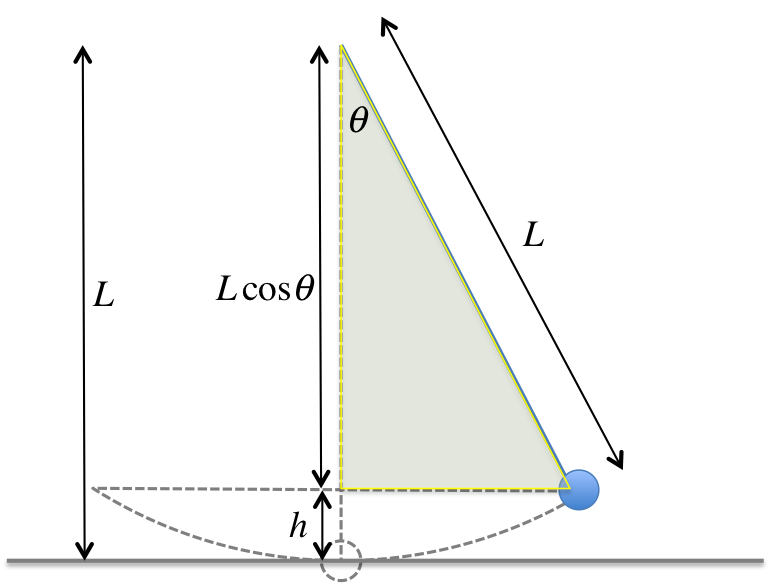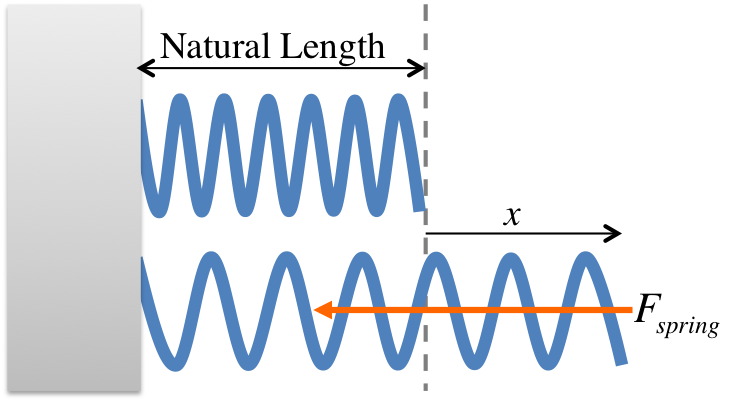Conservation of Energy
When friction is absent, the total mechanical energy of an object is conserved, i.e. \(KE + PE = constant\). A more useful way to restate this is to say:

Simulation - Sliding Down an Incline (click to hide)
The force diagram can also be dragged to a different location.
The length of the track is \(20m\). The mass of the block is \(1kg\).
Try It Yourself (click to show)


The potential energy of a pendulum is gravitational in nature, so it is still given by \(PE=mgh\). The only extra step that is neccessary here is a mathematical one: how to write \(h\) in terms of \(\theta\)?
The figure on the left shows the geometrical meaning of \(h\) for the pendulum. From the triangle, one could work out the side adjacent to \(\theta\) as \(L\cos\theta\). Since the length of the pendulum does not change, we have: $$ \begin{eqnarray} L&=& h + L\cos\theta \\ \Rightarrow h &=& L - L\cos\theta \\ &=& L(1 - \cos\theta) \\ \Rightarrow PE &=& mgh = mgL(1 - \cos\theta) \end{eqnarray} $$
Simulation - Simple Pendulum (click to hide)
Drag on the ball to change the length.
Drag on the bar to change the angle.
Click on the clock to reset the timer.
The mass of the object is fixed to be \(m = 1kg\).
The grey horizontal line represents the lowest level of the pendulum trajectory, used as a reference level for height measurement.
Activity
Use the clock to time 10 oscillations and deduce the period. Repeat for a different length and see how the period changes.

